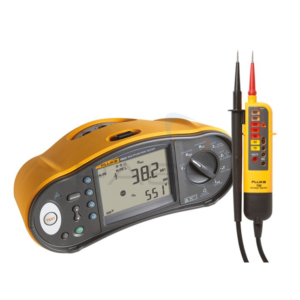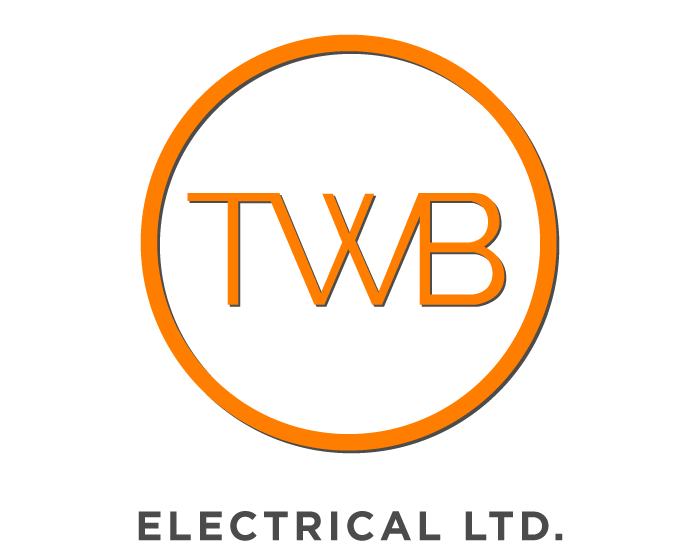EICR’s are Electrical Installation Condition Reports, also known as an electrical test, electrical landlord check and various others.
An Electrical Installation Condition Report (EICR) is a detailed inspection and assessment of the electrical installations within a property. It is conducted by a qualified electrician or electrical contractor in the United Kingdom to determine the safety, condition, and compliance of the electrical systems in a building. The primary purposes of an EICR are:
 Safety: To assess whether the electrical installations are safe for use and whether they pose any immediate or potential hazards to occupants.
Safety: To assess whether the electrical installations are safe for use and whether they pose any immediate or potential hazards to occupants.- Condition: To evaluate the condition of the electrical installations, identifying any wear and tear, damage, or defects that may affect their performance or safety.
- Compliance: To ensure that the electrical installations comply with the relevant electrical regulations and standards in the UK. This includes checking that the electrical work adheres to the Wiring Regulations (BS 7671).
Here’s an overview of what an EICR typically involves:
- Visual Inspection: The electrician conducts a visual inspection of the electrical installations, looking for any obvious signs of damage, wear, or non-compliance with regulations.
- Testing: Electrical tests are performed to assess the safety and performance of the installations. This includes tests such as earth fault loop impedance, continuity, insulation resistance, RCD tripping times and polarity checks.
- Identification of Defects: Any defects, non-compliance issues, or safety concerns are identified and categorized according to their severity.
- Recommendations: The EICR report includes recommendations for remedial actions, repairs, or improvements needed to bring the electrical installations up to the required safety and compliance standards.
- Observations: The report may include observations about the condition of the installations, maintenance recommendations, and notes about any areas of concern.
Coding: The report typically uses a coding system to categorize findings:
C1: Dangerous condition, immediate remedial action required.
C2: Potentially dangerous condition, remedial action required urgently.
C3: Improvement recommended.
FI: Further investigation required without delay.
Certificate: Once the EICR is completed, the electrician issues a report and, if everything is in order, an Electrical Installation Certificate (EIC) is issued.
EICRs are essential for ensuring the safety of electrical installations in homes, businesses, and rental properties. Landlords, homeowners, and businesses are responsible for ensuring that their electrical systems are regularly inspected, and necessary maintenance and repairs are carried out to mitigate risks and comply with legal requirements
As of my last knowledge update in September 2021, the general guidelines were as follows:
Private Residential Properties (Houses and Flats):
For privately owned residential properties, it is not a legal requirement to have a periodic EICR. However, it is recommended to have an EICR conducted at least every 10 years for an owner-occupied home.
Landlord-Owned Residential Properties:
Landlords of rented residential properties, including houses, flats, and Houses in Multiple Occupation (HMOs), are required by law to have an EICR conducted at least every 5 years or whenever there is a change of tenancy.
Houses in Multiple Occupation (HMOs):
HMOs are subject to more stringent regulations, and an EICR is typically required every 5 years, similar to regular rental properties.
Special Circumstances:
In certain situations, such as if there are concerns about the electrical safety of a property, an EICR may be required more frequently.
Commercial Properties (Office Buildings, Shops, etc.):
EICR should be conducted at least every 5 years for such premises.
Industrial Properties:
EICR should be carried out at least every 3 years for industrial premises.
Public and Educational Buildings:
For public buildings, such as libraries and community centers, EICR should be performed every 5 years.
Educational buildings, like schools, typically require an EICR every 3 years as well.
Hospitals and Medical Clinics:
Healthcare premises, including hospitals and clinics, may have more stringent requirements. EICR frequency can vary but often ranges from every 1 to 5 years.
Specialized Environments and High-Risk Locations:
Some specialized environments, such as swimming pools or agricultural installations, may have their own specific requirements, and more frequent inspections might be necessary.
It’s essential to note that these guidelines may have changed or been updated since this was written – September 2021. Regulations regarding electrical safety can be subject to changes and updates, so it’s crucial for building owners and operators to stay informed about the latest requirements and compliance standards set by the UK government and relevant authorities.
Building owners and managers should consult with a qualified electrician or electrical contractor who can assess their specific situation and advise on the appropriate inspection frequency based on the type and use of the commercial building. Additionally, it’s essential to keep detailed records of EICR reports, as they may be required for compliance and safety purposes.
TWB Electrical carry out EICRs in Lincolnshire to schools and academies, factories and warehouse, agricultural buildings and domestic properties. Please give our office a call to request a price and ensure your electrical installation is safe and up to standard – 01472 511486 or [email protected]
Caistor
Gainsborough
Brigg
Market Rasen
Lincoln
Hykeham
Spilsby
Saxilby
Horcastle
Louth
Woodhall Spa
Gainsborough
Grimsby
Immingham
Cleethorpes
